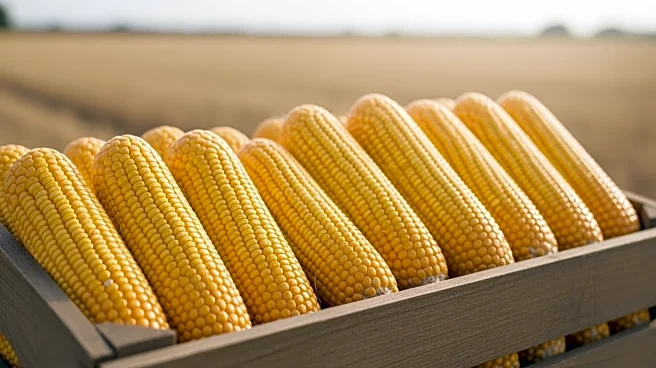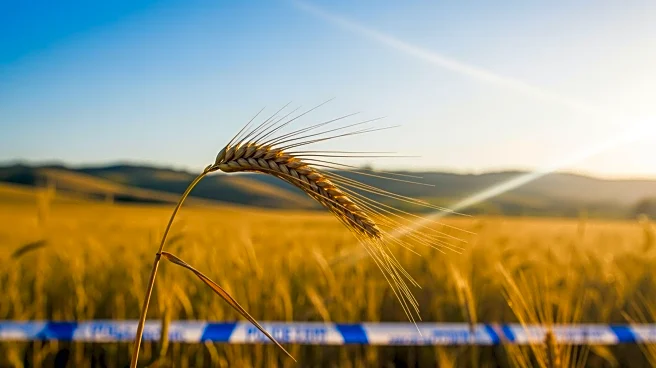What's Happening?
The U.S. corn harvest is experiencing delays, with progress estimated at 44% as of Sunday, according to a Reuters poll of analysts. This is slightly behind last year's pace, where 45% of the crop had been harvested by the same time. The delay is partly
attributed to the ongoing federal government shutdown, which has halted the USDA's Crop Progress reports. Agronomists across the Corn Belt are providing insights into the harvest, noting variability in yield averages due to factors such as dry weather and disease pressure. In Iowa, agronomists report rapid harvest progress with yields ranging from average to below average. In Illinois, yields are reported to be significantly lower than last year, with some areas experiencing conditions similar to 2012. Nebraska is seeing yields affected by disease pressure, with fungicide-treated fields performing better.
Why It's Important?
The delay in the corn harvest and the lack of USDA reporting could have significant implications for farmers and traders who rely on this data for decision-making. The variability in yields due to disease pressure and weather conditions highlights the challenges faced by the agricultural sector. Lower yields can impact the supply chain, potentially leading to higher prices for corn and related products. The situation underscores the importance of timely and accurate data for managing agricultural production and market expectations.
What's Next?
As the government shutdown continues, stakeholders in the agricultural sector may need to rely more heavily on local agronomists and private data sources for insights into crop progress. The variability in yields suggests that farmers may need to adjust their strategies, possibly increasing the use of fungicides or other treatments to mitigate disease pressure. The situation may also prompt discussions on the need for more resilient agricultural practices and infrastructure to better handle such disruptions.















